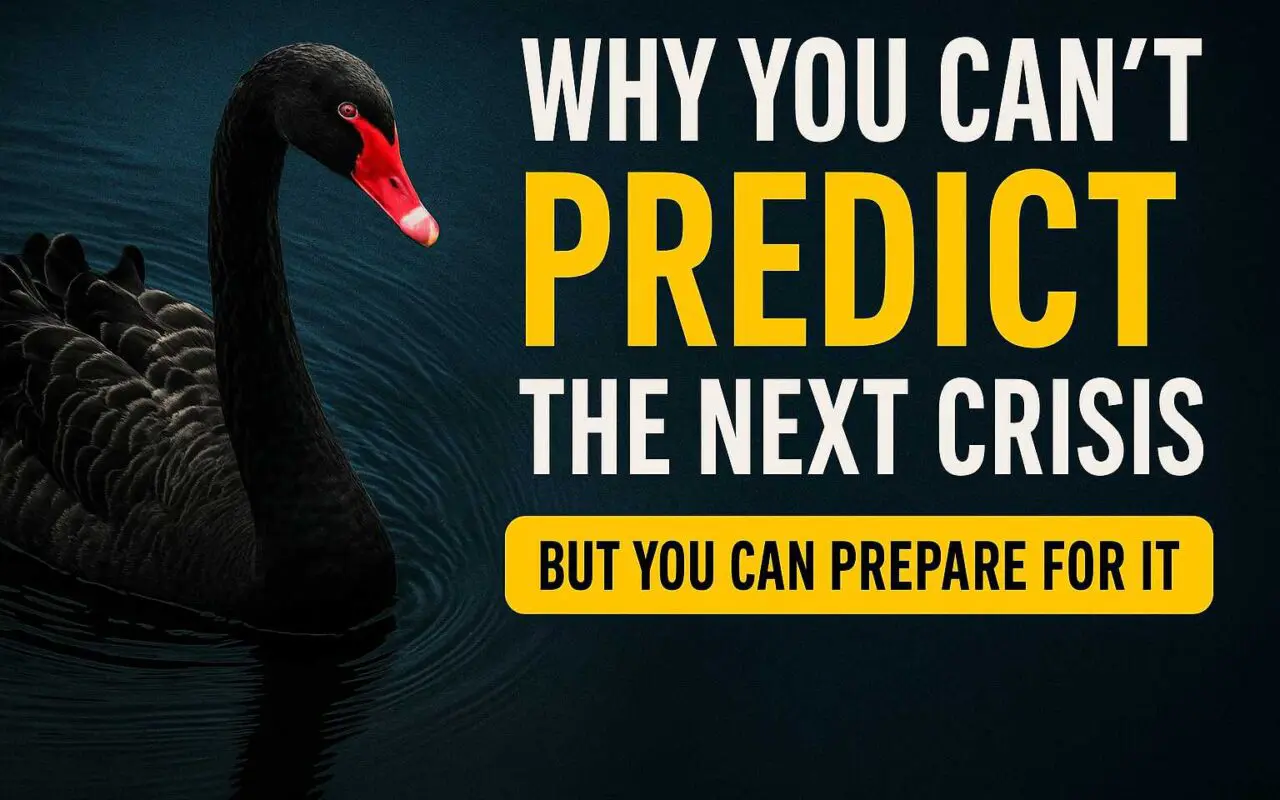It was March 12, 2020. The Dow Jones plummeted 2,352 points in a single day – the largest point drop in history at the time. Within weeks, entire industries ground to a halt, governments printed trillions of dollars, and the world fundamentally shifted in ways no forecasting model had predicted. That was a Black Swan event.
Sound familiar? It should. Because while COVID-19 dominated headlines, it’s just the latest in a long line of events that “nobody could have seen coming” – yet somehow always seem obvious in hindsight.
These aren’t just random bad luck. They’re what mathematician and former Wall Street trader Nassim Nicholas Taleb calls “Black Swan events” – and understanding them might be the most important mental model you’re not using.
Here’s the uncomfortable truth: Your brain is evolutionarily wired to miss the very events that will have the biggest impact on your life, career, and financial future.
We’re pattern-seeking machines living in a world where the most consequential changes don’t follow patterns. We build models based on what we’ve seen, then get blindsided by what we haven’t. We mistake the absence of evidence for evidence of absence. And we consistently underestimate the role of extreme, unpredictable events in shaping everything from economic markets to geopolitics to technological breakthroughs.
But what if I told you there’s a way to not just survive these unpredictable events, but actually benefit from them?
In the 5-minute video below, we dive deep into Taleb’s groundbreaking framework for navigating uncertainty. You’ll discover why COVID-19 wasn’t actually a Black Swan (according to Taleb himself), learn about the “Turkey Problem” that explains our collective blindness to risk, and most importantly – walk away with practical strategies to build what Taleb calls “antifragile” systems that grow stronger from disorder.
Because while you can’t predict the next crisis, you can absolutely prepare for it. And in a world increasingly dominated by AI breakthroughs, geopolitical shifts, and technological disruption, that preparation isn’t just smart – it’s essential.
Ready to rewire how you think about uncertainty? Let’s dive in.
